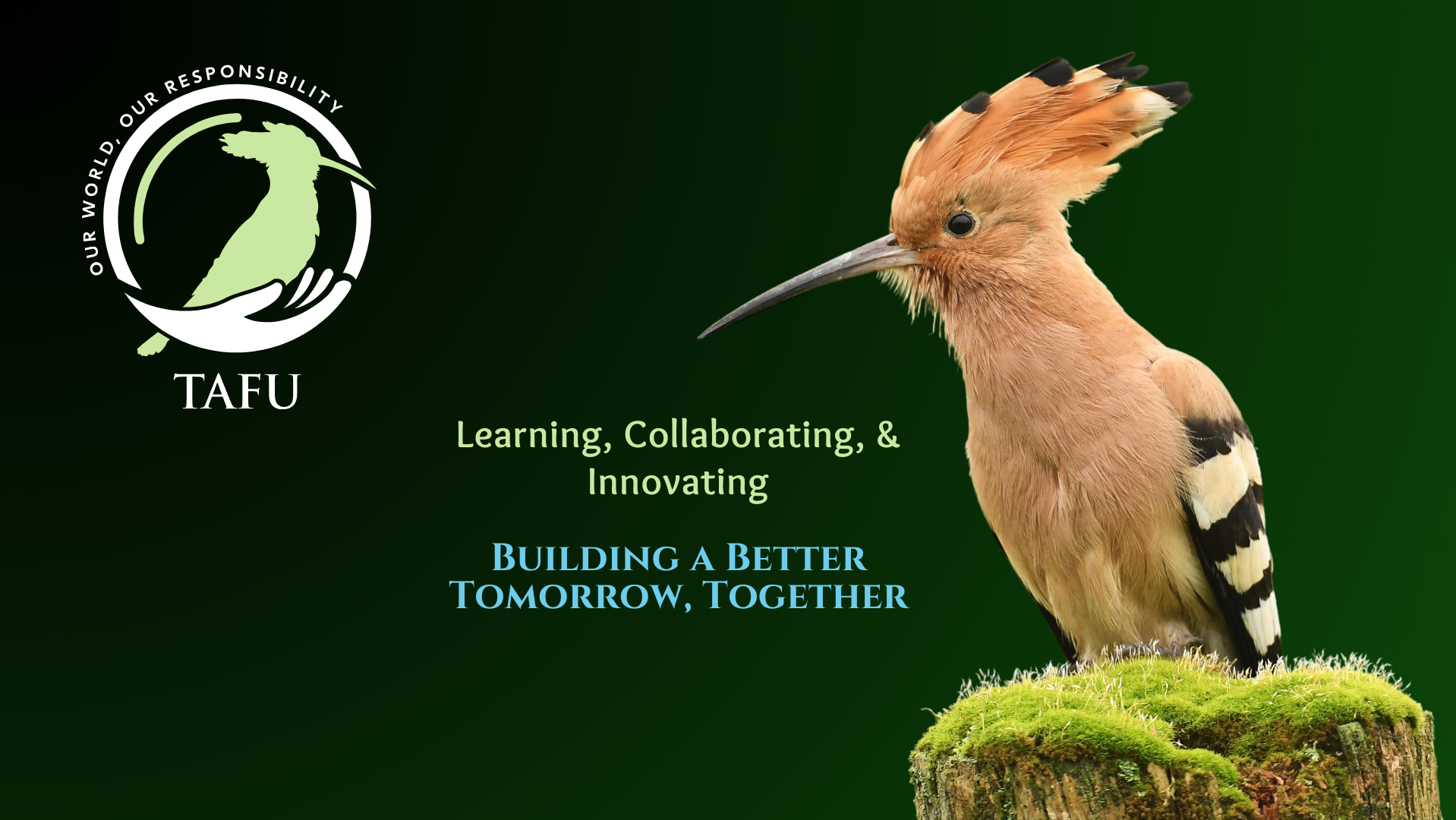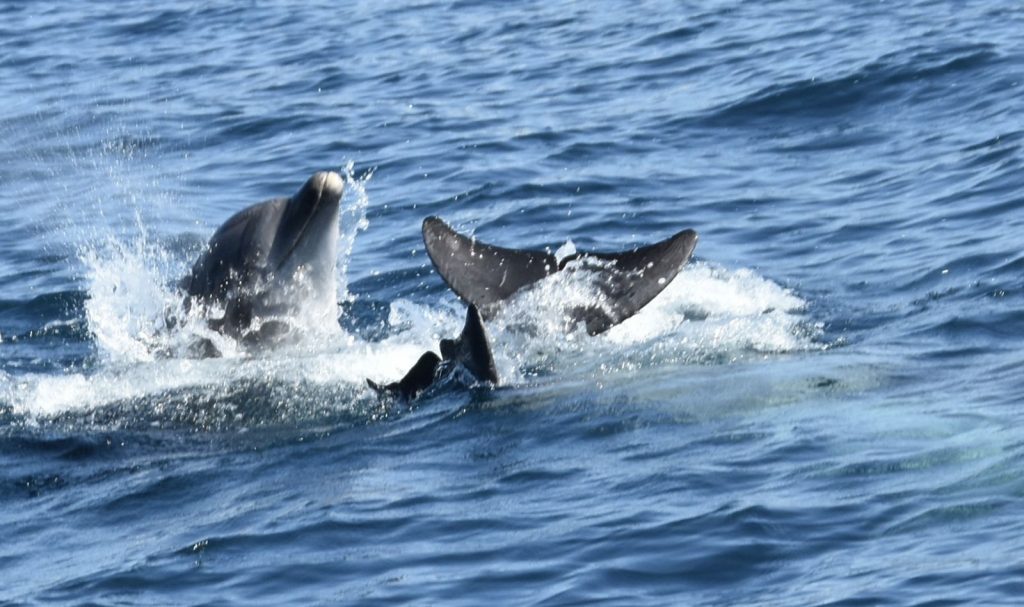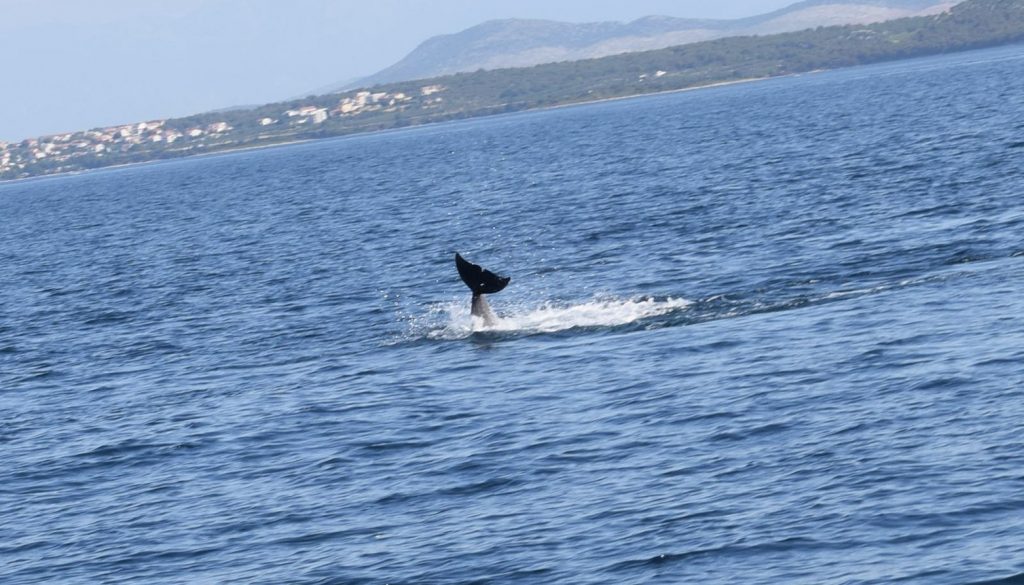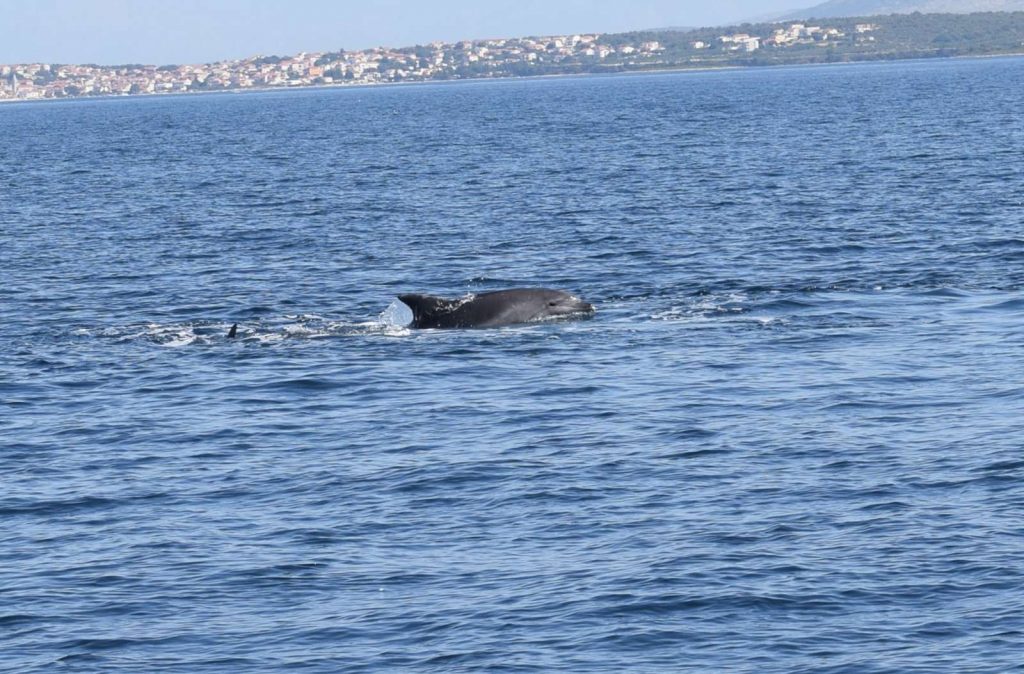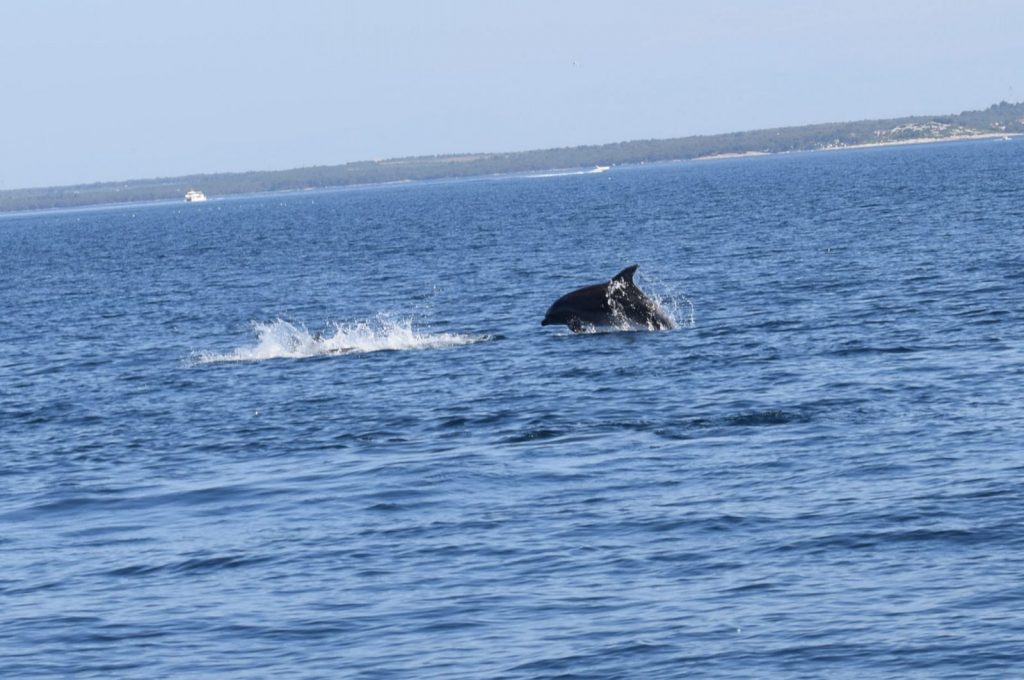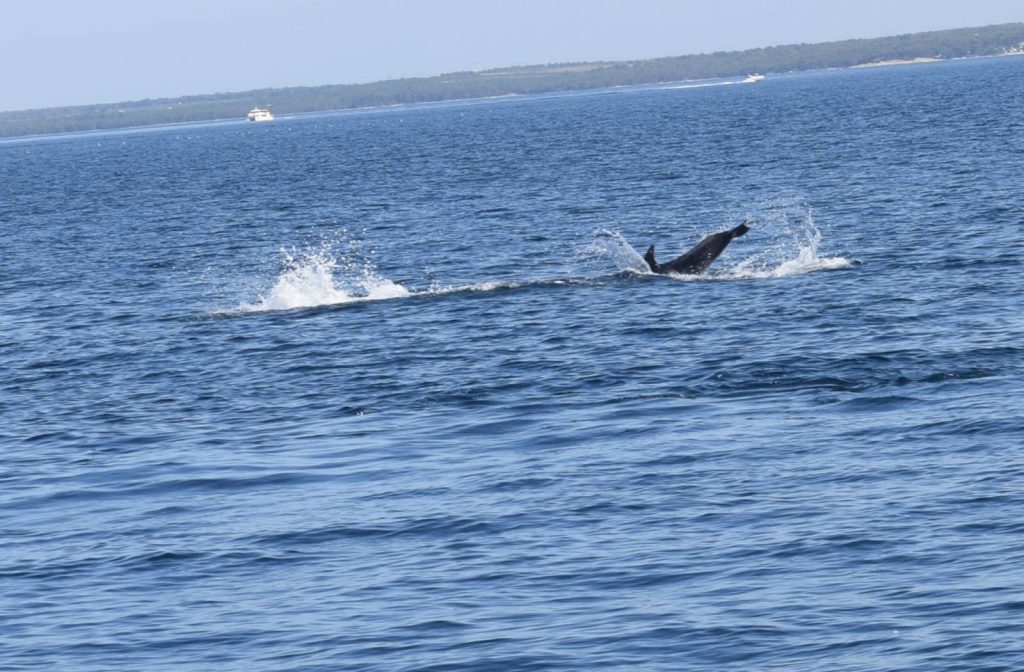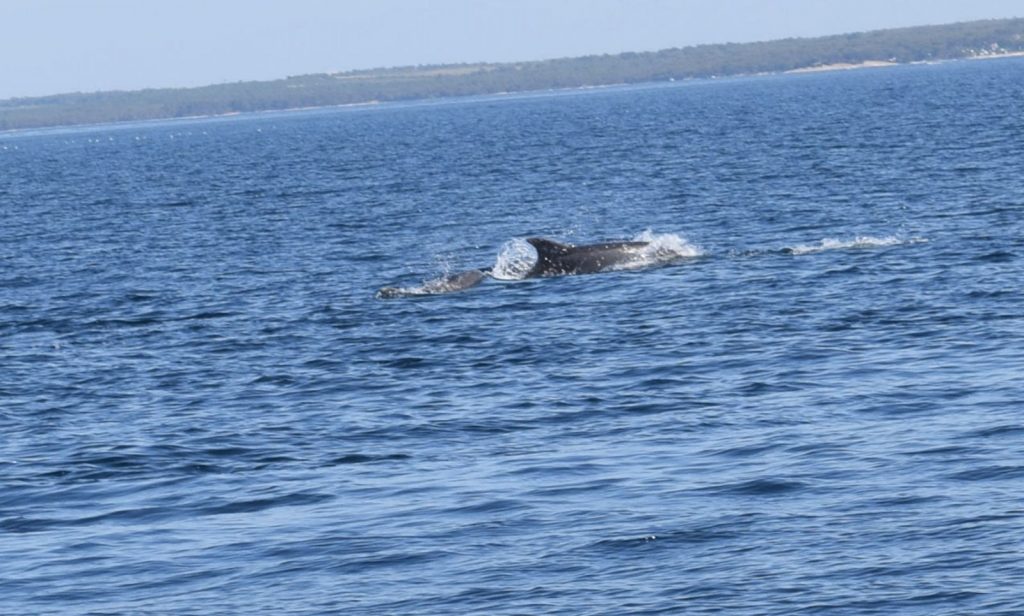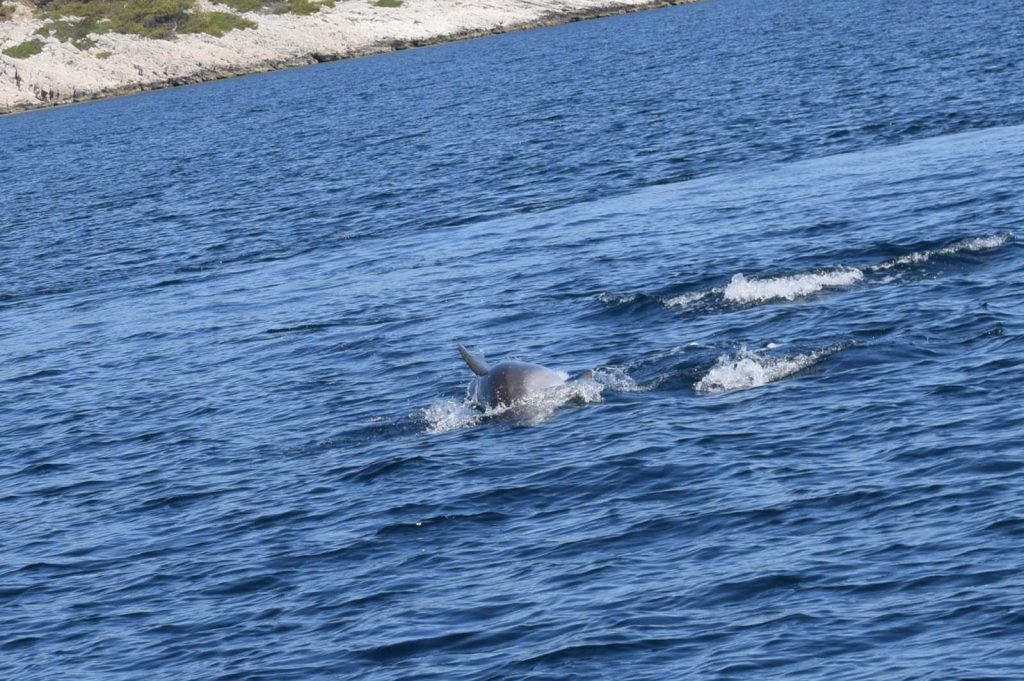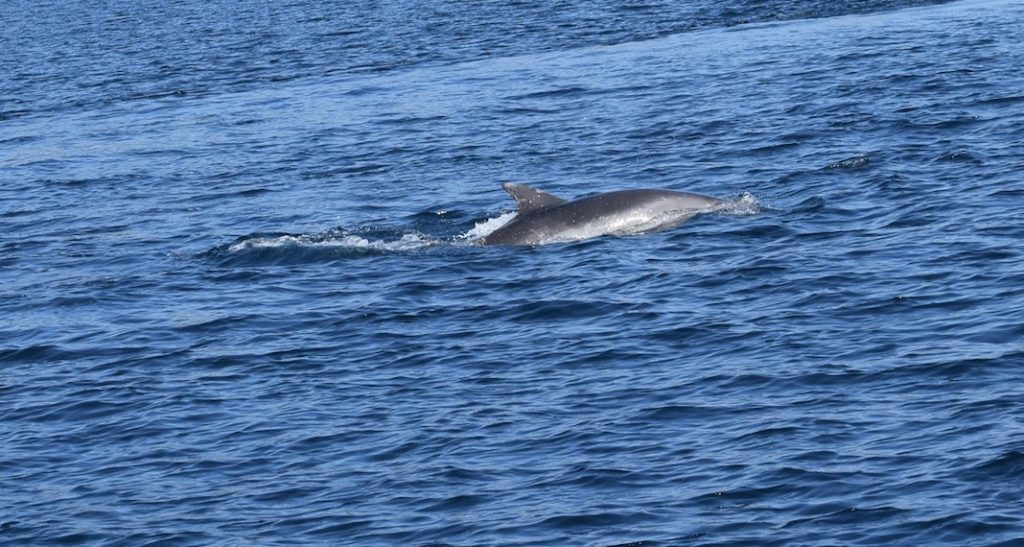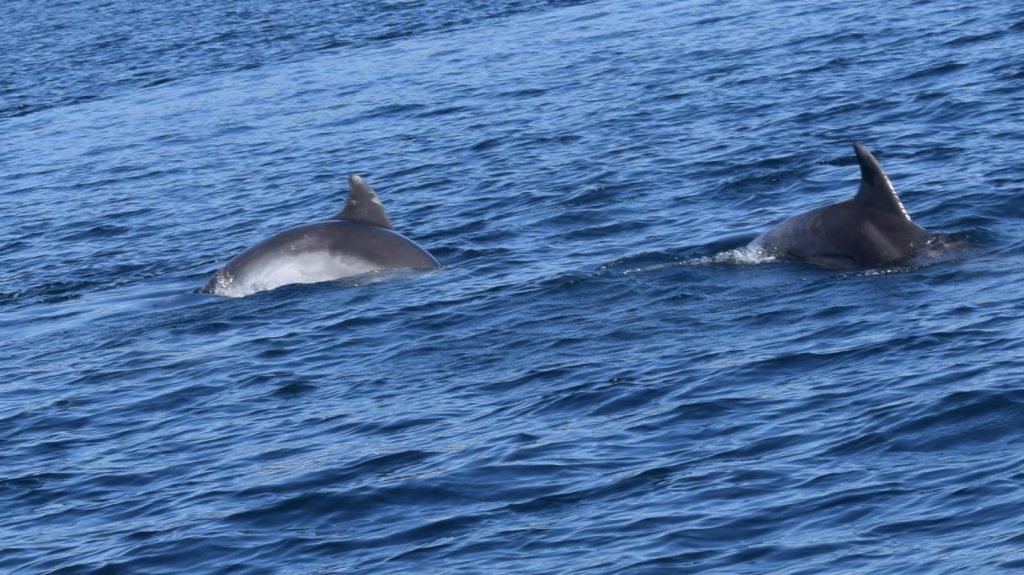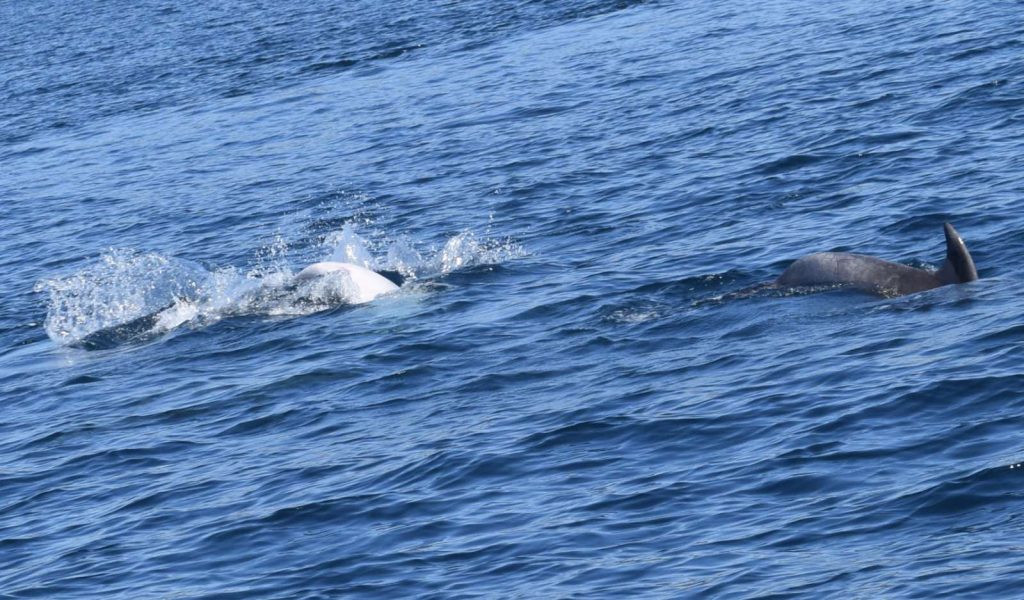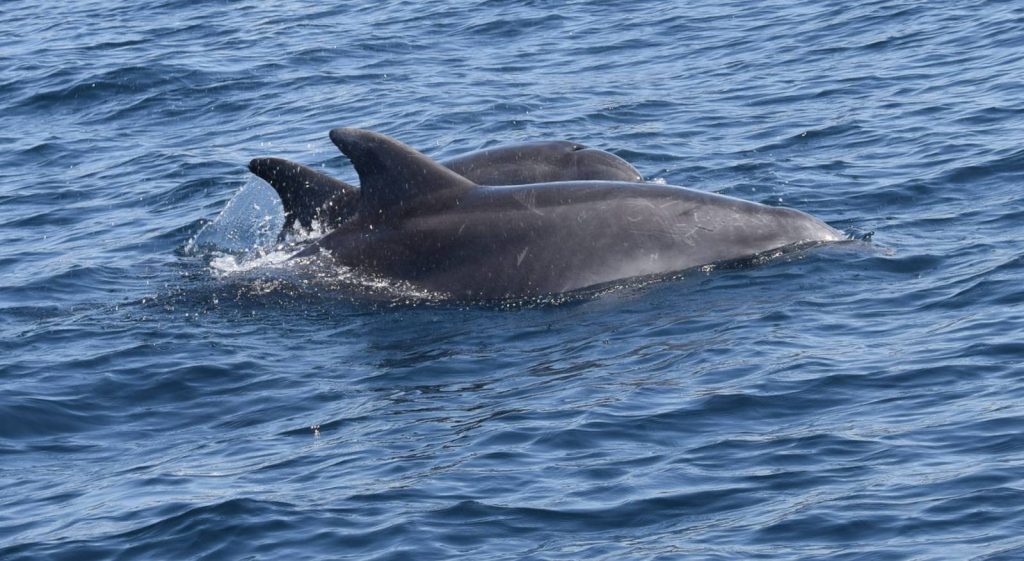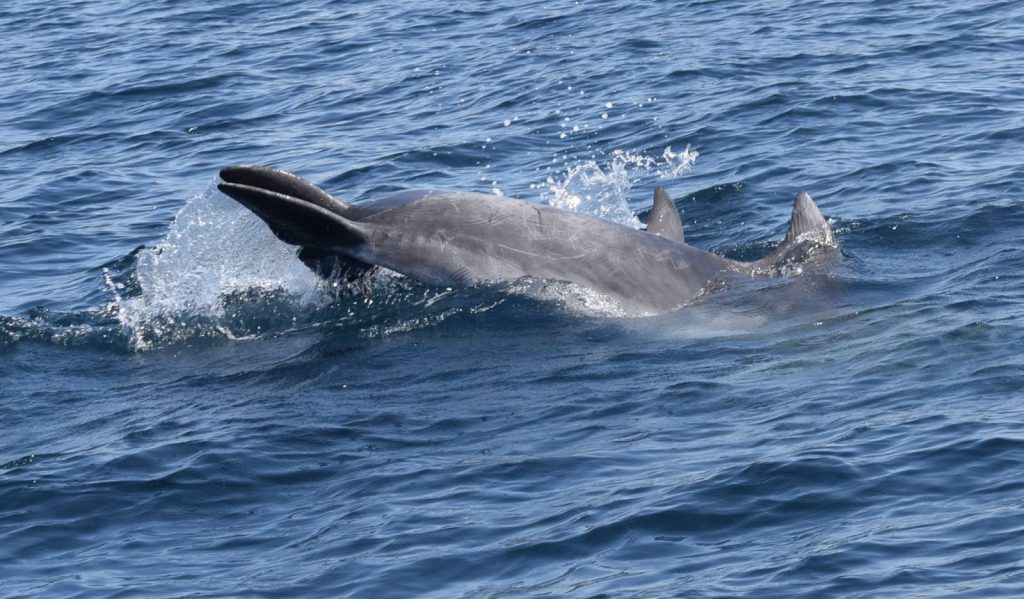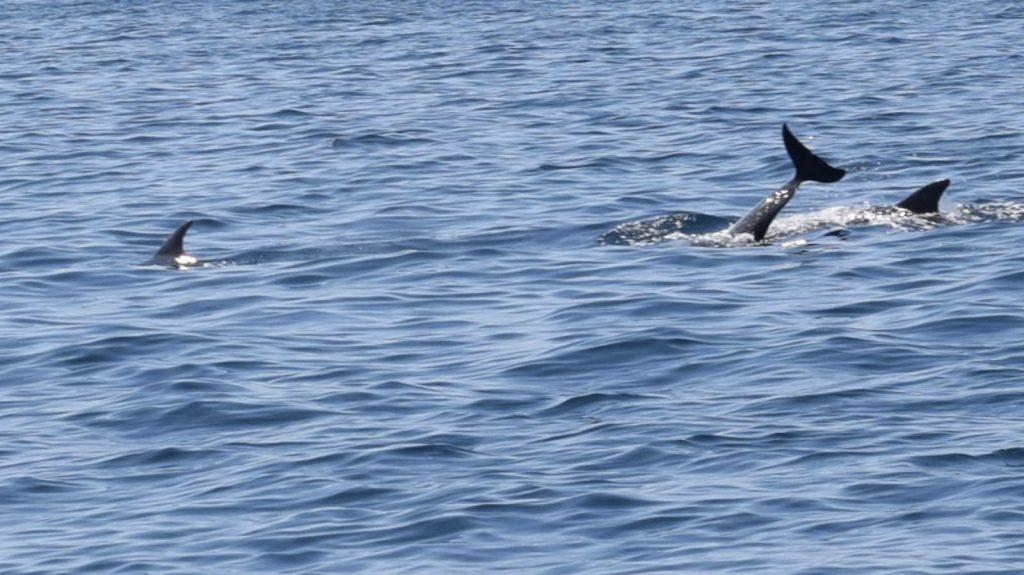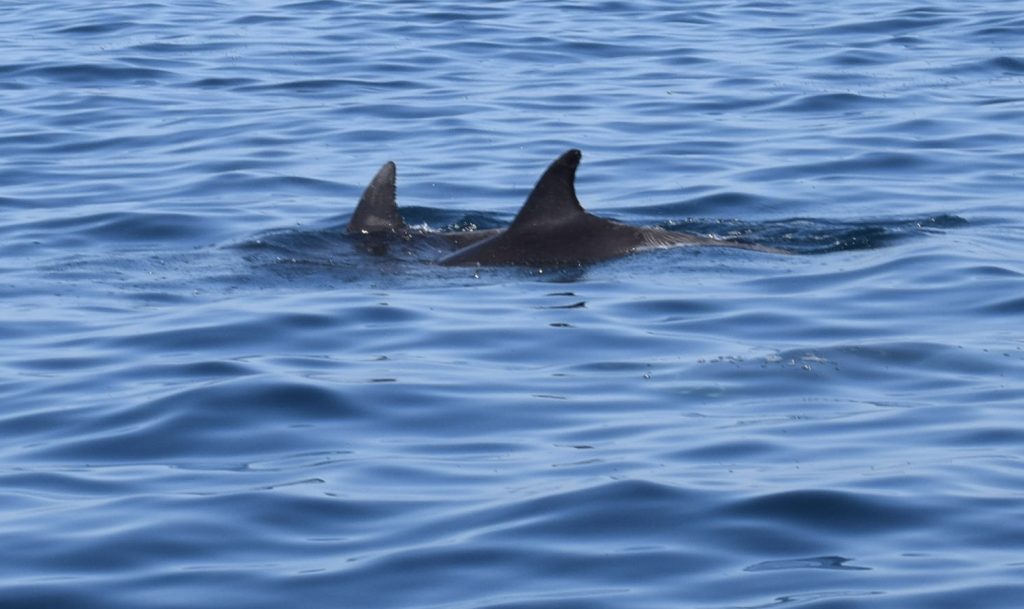Bottlenose dolphins! A wonderful treat, seeing them today. Tursiops truncatus is the binomial name for bottlenose dolphins. Bottlenose dolphins are one of only four species of dolphin in the Mediterranean! You can find three other species there; Striped dolphins(Stenella coeruleoalba), Risso’s Dolphins(Grampus griseus) and Common dolphins(Delphinus delphis). Dolphins are mammals and, therefore, give birth to living young and feed them milk. Bottlenose dolphins, the one we saw today, can get up to 500kg in weight and up to 4.3 m in length! Pretty amazing! Bottlenose dolphins are very social and very playful creatures. Living up to 50 years old, they form bonds among themselves, protecting each other, hunting together and mating. They often like to surf waves and that’s why they often go around big boats trying to use the waves they make usually to gain speed. They can swim up to 35.5 km/h, or 22 m/h! These dolphins sometimes make bubble walls by letting air out from their blowhole, which they then swim through for fun! Bottlenose dolphins can hold their breath for up to 12 minutes! They do this by exchanging 80% or more air between their lung and the outside air. This is much more than humans do, humans only exchange around 17%, which means that dolphins have a much higher level of oxygen each time they take a breath, meaning they don’t have to breathe as often as we do. A pod of bottlenose dolphins, a group, often make mud walls around their prey, waiting for them to try to escape they eat the ones that leave the mud wall! They feed on fish, shrimp and squid. They live in deep and shallow waters, which is pretty handy, meaning they have a wider range of food choices. Bottlenose dolphins are known for jumping quite high. One of the highest jumps recorded in the wild was 4.7 meters high, 15 feet! Unfortunately, they didn’t jump that high for us (:! However, in captivity bottlenose dolphins can jump up to 6.1 meters high, 20 feet! Dolphins jump to improve visibility, improve navigation and just for fun. They gain this speed by swimming down deeper towards the ocean floor and then coming up at a high velocity. This means the deeper they go and the longer they gain speed the higher they will jump. Bottlenose dolphins inhabit the Atlantic, Pacific and Indian Oceans. They can use this area for seasonal migration, for example, some dolphins travel south in winter and then north again in summer. On some of the pictures below, you can see marks on a mummy dolphin and some on her baby dolphin’s fin. These marks are called “rake marks”, which were made by other dolphins. This usually happens to establish or maintain a social hierarchy, however, sometimes it can just be caused while they are playing. Rake marks also happen in other species of dolphin, for example, Risso’s dolphin can almost be recognised for its rake marks and scratches all over its body. Unfortunately, all dolphins are also very affected by sea pollution and plastic! Many dolphins die every year due to plastic ingestion! The WWF has estimated that around 100,000 marine mammals die every year as a result of plastic pollution! Fishing gear is also a huge problem for dolphins and the second main reason marine mammals dying is being entangled in fishing nets and gear. Fishing gear is often swept away accidentally from boats. Sometimes it is even deliberately thrown away into the ocean when broken! An approximation of 8 million tonnes of plastic enters the oceans every year! 640, 000 tonnes of this have been estimated to be ghost fishing gear! (Ghost fishing is the name given to the gear, mainly nets that have been lost and thrown in the seas and oceans)We must stop not caring for what we do! We must stop just throwing things away! We must reuse, recycle and reduce our waste! Please help stop our waste problem! Every small change can make a big difference! And it will just maybe save a baby dolphin or its mummy. Trust me it’s worth thinking about our personal responsibility. If we all do it for ourselves, we are working together for all living beings on the earth, no effort is required just a little bit of care and common sense.
Nika Strok Underwood
